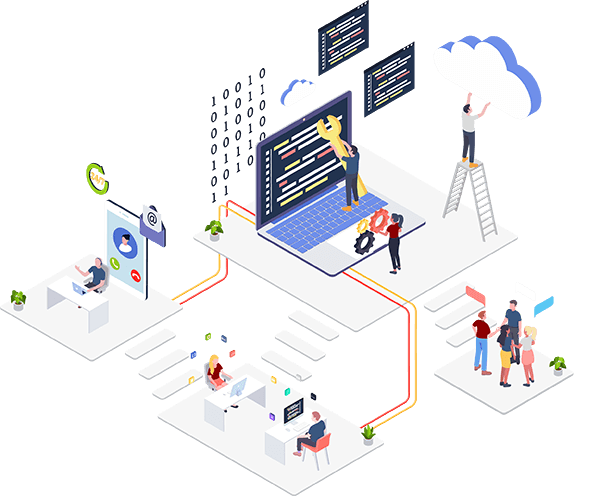Network threats have the potential to disrupt your business. We discuss five network security challenges you need to be aware of to keep your network- and your business secure.
Network security threats are a growing concern for small to medium-sized businesses. In the past, hackers and other bad actors tended to target large-scale enterprises primarily. These large companies have hardened their defenses, and many cybercriminals have begun to target smaller businesses with less robust network security protocols and defenses. According to data compiled by SCORE Business Analytics, 43% of all network attacks last year were perpetrated against small or medium-sized businesses. Here are five of the current challenges currently facing enterprise networks.
Mobile Risks
Mobile threats are a weak link in the armor of many network security protocols. Small and medium-sized businesses often lack the resources or infrastructure to guard against mobile threats properly. Mobile and network systems act in concert, so an intrusion on one end will expose the other to potential harm. There are two primary strategies SMB use to guard against mobile threats- enforcing mobile-friendly corporate security policy and reducing the number of devices with access to the network. Multifactor authentication is also an effective defense against many mobile-originated attacks.
IoT Threats
Internet of Things related-attacks is the new frontier for cybercriminals. In the average office, numerous devices connect to your network- printers, tablets, mobile phones, even some coffee machines and refrigerators. Each of these devices is a potential entry point for hackers to attack your network. Data transfer, web interfaces, and substandard authentication are all possible weak points in your network security. Network administrators often use time-out sessions, multifactor authentication, verified users and password requirements to harden their defenses against IoT related intrusions.
DDOS Attacks
DDOS or distributed denial of service attacks seek to overwhelm a computer or network by flooding it with internet traffic until it is inaccessible by the intended users of a site. DDOS attacks originate from multiple points of origin, typically through the use of botnets which prevent network security professionals from blocking the offending machines from sending traffic. The most common targets of these attacks are payment gateways for financial institutions like banks or brokerages. Often targets are required to make payments to cybercriminals via bank transfer or cryptocurrency to get the attacks to stop.
Ransomware/Rootkits
Ransomware is used by blackhat hackers to extort victims of compromised systems. The ransomware is installed on your network via a compromised device, frequently as the result of a breach of one of your other network security defenses. Popular targets for ransomware are company emails spoofed to come from a trusted person inside or outside of the organization. After the ransomware infects the network, hackers can steal data, lock out users, and generally deny access to the system until their demands are met.
A common tactic is to request a payment in bitcoin or other cryptocurrencies to regain control. This payment may or may not restore admin access, and even in times where access is granted the hackers will continue to extort the business to maintain that access. Small businesses are seeing more and more ransomware attacks, and ransomware can take your business offline for hours, days or even weeks. Even governmental organizations like police stations and utilities see attacks regularly.
Rootkit attacks involve the use of malicious software programs to infiltrate your network. These programs take control of vital software processes or access channels to steal information like email accounts or password databases. They are generally coded to be nearly impossible to detect and remove from your network. The attacker gains access to the system and has free reign to use your systems for a wide variety of destructive purposes. Many DDOS attacks originate from systems infected with rootkits. Common rootkits include trojans, keyloggers, bootloader, and zero access kits- among many others.
Social-Engineering Attacks
These attacks rely on psychologically manipulating employees to give away sensitive financial and business information to malicious actors. They accomplish this through the use of person to person interactions via communication channels like emails, chat messages and phone calls. Social-engineering attacks are among the most common, and lucrative network security attacks. They rely on lapses in human judgment to gain access to your systems. Regular data security audits and employee training are the best ways to avoid the growing social-engineering attack threat.
Still interested in network security perils? This piece on Phishing is a deep-dive on the growing threat that phishing attacks pose to your organization. We are network security experts and provide managed it services in New York. Contact us today to learn more about our New York IT services, dedicated server hosting, and data backup and recovery in New York.


